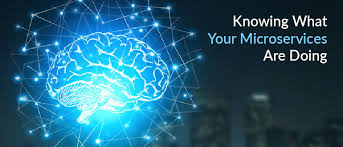Source: forbes.com
Fortunately, in reality they’re not all that strange, and certainly not without precedent.
It helps to think about their business purpose, and how much they’re like previous important advances in business technology. That requires a bit of abstraction, a nice word for simplifying, based on historical analogies.
As with many things in business, the secret to understanding these cloud computing technologies and techniques lies in establishing how their rise relates to supply and demand, the most fundamental elements of any market. With business technology, it’s also good to search for ways that an expensive and cumbersome process is being automated to hasten the delivery of value.
Microservices are elements of a larger software application that can be decoupled from the whole application. They can be updated or redeployed without having to take down, change, and then relaunch the whole application. Service meshes control how these parts interact, both with each other and with other services.
Can we get more complex than this? Oh yes. There are containers, sidecars, APIs, monoliths, service calls, SOA, CI/CD, and IaC, just for starters. But don’t overfixate—these are important technology elements, but they all serve the common business purposes of efficiency, speed, agility, and automated management.
Think of each microservice as a tool from a toolbox. At one time, tools were custom made, and were used to custom-make machines. For the most part, these machines were relatively simple, usually designed for a few basic purposes. The were individually constructed, no two exactly alike, and that limited the building and the fixing of them.
Then with the advent of standardized measurement and industrial expansion, we got precision-made machine tools capable of much more reuse and wider deployment. These tools made it possible to vastly increase the supply of products at a lower cost, exposing them to greater demand. Those standardized machine tools were more complex than their predecessors. And they enabled a boom in standardized re-use, a simpler model overall.
It’s the same with microservices—the elements are often more complex, but the overall process allows for standardized reuse, through the management of service meshes. The “tool” in this case is software that carries out a function—for example, doing online payments or creating security verifications.
T-Mobile uses microservices to increase the frequency of software releases from quarterly to as often as daily, making them more responsive to the market. PwC Australia built applications that can respond to changes in some customer behaviors, while keeping core operations running. You can learn more here, in an article with more good explanations and examples.
Extrapolating from this analogy, does the boom in microservices tell us that the computational equivalent of the Industrial Revolution is underway? Is this an indication of standardization that makes it vastly easier and faster to create objects and experiences, revolutionizes cost models, and shifts industries and fortunes?
Without getting too grandiose about it, yes. As with the Industrial Revolution, there will probably be a period where older artisans (in this case, traditional IT teams) have to get accustomed to the new method, but over time the big change will happen.
You see it around you already—in the creation of companies that come out of nowhere to invent and capture big markets or in the workforce transformations that allow work and product creation to be decoupled. Which is, not accidentally, much the way microservices decouple from larger applications in order to tweak particulars without interrupting larger operations. Since change has become easier, you see it in the importance of data in determining how things are consumed, and in rapidly reconfiguring how things are made and what is offered.
And you see it in the way businesses are re-evaluating how they apportion and manage work. Nothing weird about that, we did it in much bigger ways in the Industrial Revolution.
It’s understandable how the complexity of tech generates anxiety among many of its most promising consumers. Typically, a feature of business computing evolves from scarce and difficult to grasp knowledge. Its power and utility speeds its evolution, often faster than software developers can socialize it or the general public can learn it. Not that long ago, spreadsheets and email were considered weird, too, for these same reasons.
To move ahead, though, it’s important to recognize big, meaningful changes, and abstract their meaning into something logical and familiar. At a granular level, microservices may be complex, but their function is very straightforward and critical for successful businesses.


